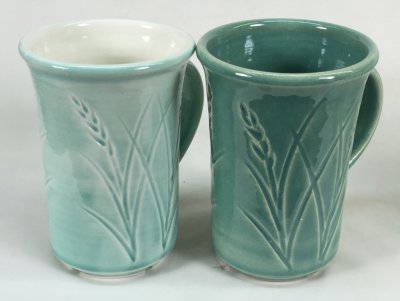What Color Does Copper Stain Turn To Ceramics

Ceramic pigments often referred to as ceramic stains have vastly opened up the color possibilities for potters.
What color does copper stain turn to ceramics. Unlike working with paints the raw glaze you put on your prize pot or sculpture often looks completely different from the fired result. The time frame and shades of color each building goes through vary but eventually the copper will end up a brilliant green. For more than 40 years mason color has been a global supplier of high performance pigments to all sectors of the ceramic industry. And as we all know adding color to your ceramic art can be a tricky proposition.
Mason stains mason stains are made by mason color works which is one of the oldest manufacturers of ceramic stains. Because ceramic stains consist of metallic oxides always consider safety a stain is a mix of metal and ceramic oxide that has been ground into a powder. While copper gutters and downspouts as well as roofing start their service with that beautiful golden bronze color the new penny copper shine eventually they will develop a patina that changes over time. Ceramic stains are generally added at 5 8 in a glaze and 15 25 in slips and clay bodies.
Under varying circumstances these colorants can give very different results. Water stains if the discoloration seems to be damp check the attic or ceiling below the roof stain and investigate for a leak. An overview of ceramic stains description. Our fully outfitted lab and skilled technicians will help you choose the perfect color.
Stains containing otherwise toxic oxides can be employed without significant dangers. Diy using copper tiles there are so many beautiful and affordable options for example. Oxide colors is the key to choosing the best approach. You can add mason stains to dry glaze recipes to produce color in an opaque or transparent base glaze.
Antique embellished tin tiles above or the copper art deco tiles below. Understanding the advantages of disadvantages of stains vs. Trees plant debris stains stain patches under trees or nearby may be due to seeds berries leaves and other debris falling and decaying. Stains are fired blends of metal and ceramic oxides that have been reground into a fine powder.
Either could be used on a ceiling or for a backsplash. Colors in glazes are affected by the clay slips stains or underglazes below them. Stains and oxides can be very toxic so you must make sure not to have food or consumable liquids when you are working with them. Because ceramic stains contain coloring metal oxides along with other ceramics materials like opacifiers silica and alumina adding them to certain glaze bases can cause a glossy glaze surface to turn matte.
Most ceramic colors however are a result of metallic oxides being dispersed in the fabric of the glaze itself. This diamond patterned ceramic tile is by ann sacks.














































